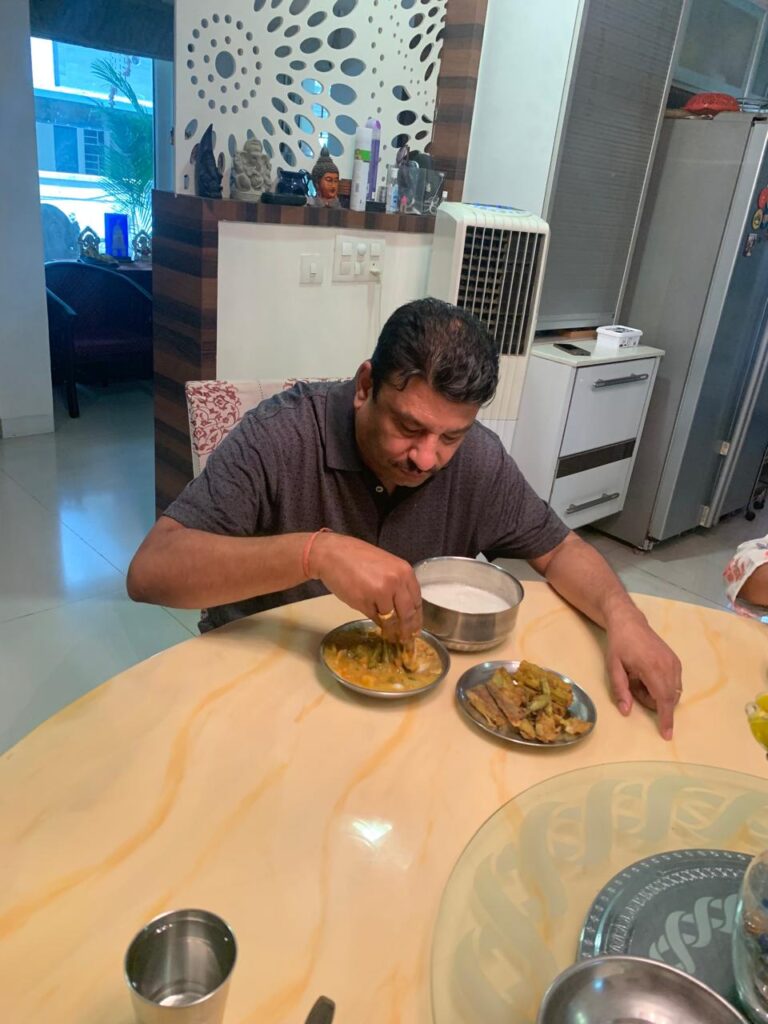A Celebration of Pakhala Dibasa in Hyderabad: A Taste of Odisha in Telangana:
By Lokanath Mishra
As the sun rose over the bustling city of Hyderabad, I prepared to celebrate Pakhala Dibasa in a unique way. I was not in Odisha, the land of my ancestors, but in the vibrant city of Hyderabad, where my brother-in-law, Basant, had invited me to join him and his family in celebrating this special day.

Upon arriving at Basant’s house, I was greeted by the warm aroma of pakhala wafting from the kitchen. His wife, Mitu, was busy preparing the traditional Odia dish, using a recipe that had been passed down through generations of her family.
I was impressed by the spread of dishes that Mitu had prepared – pakhala, accompanied by a variety of vegetables, lentils, and pickles. The table was set with traditional Odia utensils and plates, adding to the festive atmosphere.

As we sat down to eat, Basant explained the significance of Pakhala Dibasa to his wife and sister, who were fascinated by the story of this unique dish. Mitu and my wife, meanwhile, were busy serving the pakhala, making sure that everyone’s plate was full.
As we savored the pakhala, I was transported back to my childhood days in Odisha, where my mother would prepare this dish for special occasions. The taste was identical, and I felt a deep sense of connection to my roots.
The celebration of Pakhala Dibasa in Hyderabad was a unique experience, one that blended the traditions of Odisha with the warmth and hospitality of Telangana. I felt grateful for the opportunity to connect with my heritage in a new and exciting way.
A Divine Offering: The Curd Rice of Shri Jagannath Temple
As I sat in Basant’s house, relishing the flavors of pakhala, my mind wandered to the sacred Shri Jagannath Temple in Puri, Odisha. One of my most cherished memories was savoring the divine curd rice offered as prasad to the deity, a truly unforgettable experience.
The curd rice, known as “dahi-pakala” in Odia, is a simple yet sublime offering made to Lord Jagannath, the presiding deity of the temple. The rice is cooked to perfection, then mixed with curd, salt, and a blend of aromatic spices and herbs. The resulting dish is a masterpiece of flavor and texture, with the tangy curd complementing the fluffy rice perfectly.
As I recalled the experience of eating the curd rice in the temple, I felt a deep sense of nostalgia. The temple’s kitchen, known as the “rosaghar,” is renowned for its delectable offerings, and the curd rice is one of the most sought-after prasad among devotees.
The significance of the curd rice offering in Shri Jagannath Temple lies in its simplicity and humility. The dish is a poignant reminder that even the simplest of foods can be transformed into a divine offering when prepared with love and devotion.
As I finished my pakhala at Basant’s house, I felt grateful for the opportunity to connect with my roots and experience the divine flavors of Odisha. The memory of the curd rice offered in Shri Jagannath Temple lingered in my mind, a reminder of the transcendent power of food to bring people closer to the divine.
